
Polysiphonia is a genus of filamentous red algae with about 19 species on the coasts of the British Isles and about 200 species worldwide, including Crete in Greece, Antarctica and Greenland. Its members are known by a number of common names. It is in the order Ceramiales and family Rhodomelaceae.
Polysiphonia atlantica is a small filamentous species of red marine algae Rhodophyta. The thalli form small tufts up to 3 cm long. The axes are ecorticate consisting of axial cells surrounded by four periaxial cells.

Polysiphonia ceramiaeformis, also called banded siphon weed, is a small red algae (Rhodophyta), in the genus Polysiphonia. Individuals are irregularly branched with the branches extending up to 5.5 centimetres (2.2 in) from a central node and ending in dense tufts of fibres.
Polysiphonia denudata is a small red alga, Rhodophyta, growing as tufts up to 20 cm long without a main branch axis.
Polysiphonia devoniensis is a species of marine algae. It is a small red alga in the Division Rhodophyta. It is a species new to science only described recently and first published in 1993.
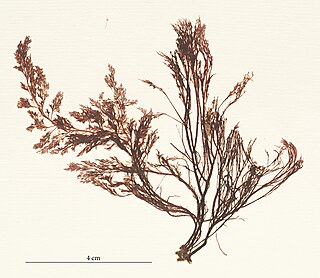
Polysiphonia elongata is a small red marine algae in the Rhodophyta.
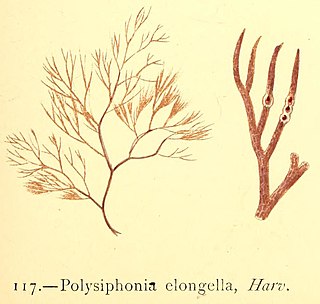
Polysiphonia elongella Harvey in W.J. Hooker is a branched species of marine red algae in the genus in the Polysiphonia in the Rhodophyta.
Polysiphonia fibrata is a species of Polysiphonia that grows as small dense tufted and finely branched marine alga in the Rhodophyta.
Polysiphonia foetidissima Cocks ex Bornet is small red marine alga in the Rhodophyta.
Polysiphonia furcellata (C.Agardh) Harvey is small marine red alga in the Division Rhodophyta.
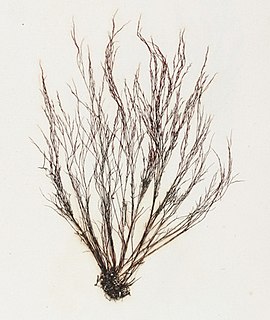
Polysiphonia nigra is a species of marine alga in the division Rhodophyta.
Polysiphonia opaca (C.Agardh) Moris et De Notaris is a small marine alga in the division Rhodophyta.

Polysiphonia stricta is a small red marine alga in the Division Rhodophyta.
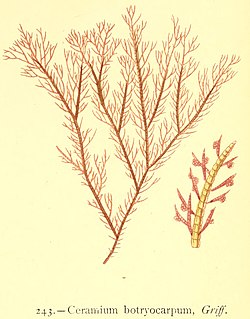
Ceramium botryocarpum is a small red marine alga in the Division Rhodophyta.

Ceramium echionotum is a small marine alga in the division Rhodophyta.

Ceramium ciliatum is a small marine red alga in the Division Rhodophyta.
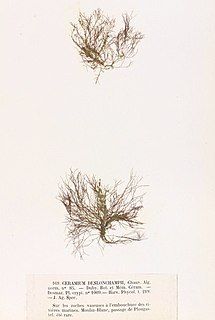
Ceramium deslongchampsii is a small marine red alga in the Division Rhodophyta.
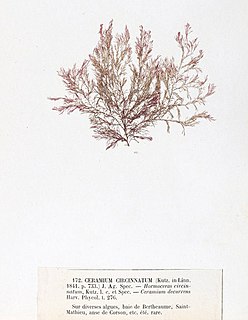
Ceramium circinatum is a small marine red algae.
Brongniartella byssoides Schmitz is a small red marine alga.
Osmundea hybrida is a fairly small marine red alga.









